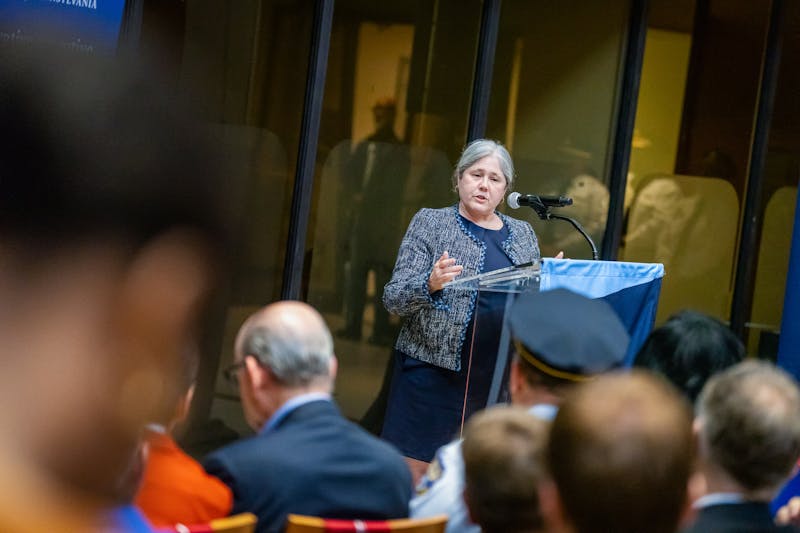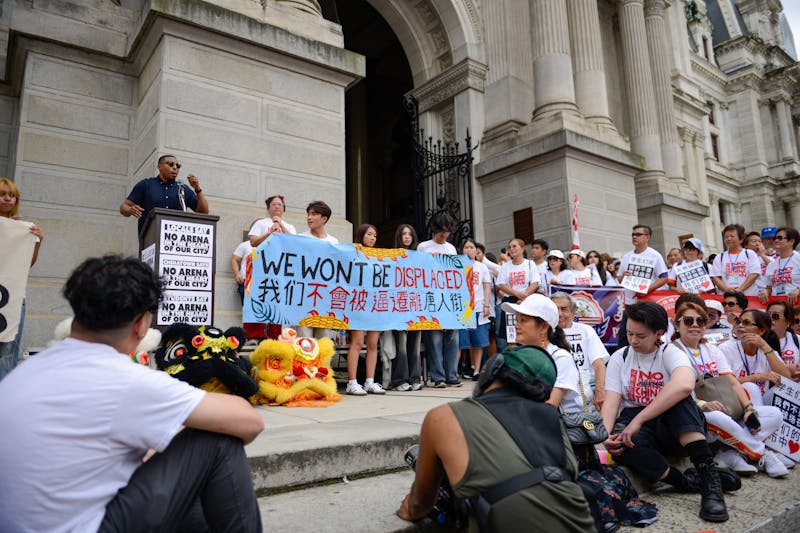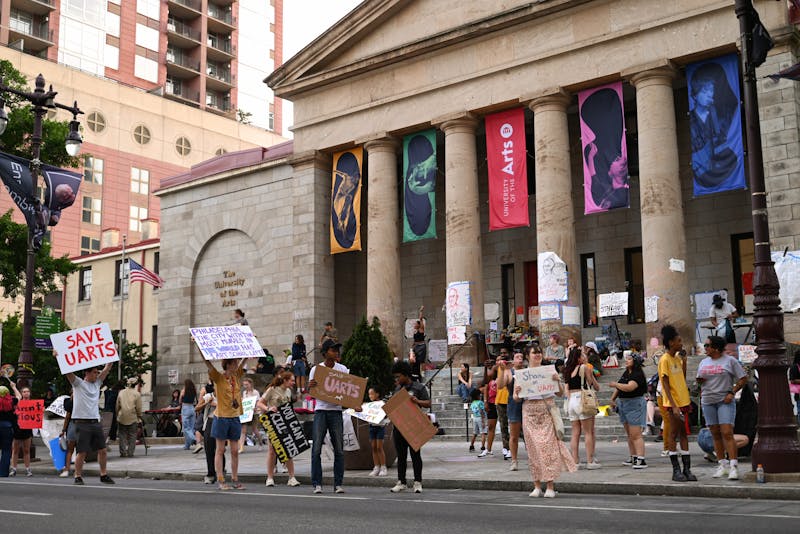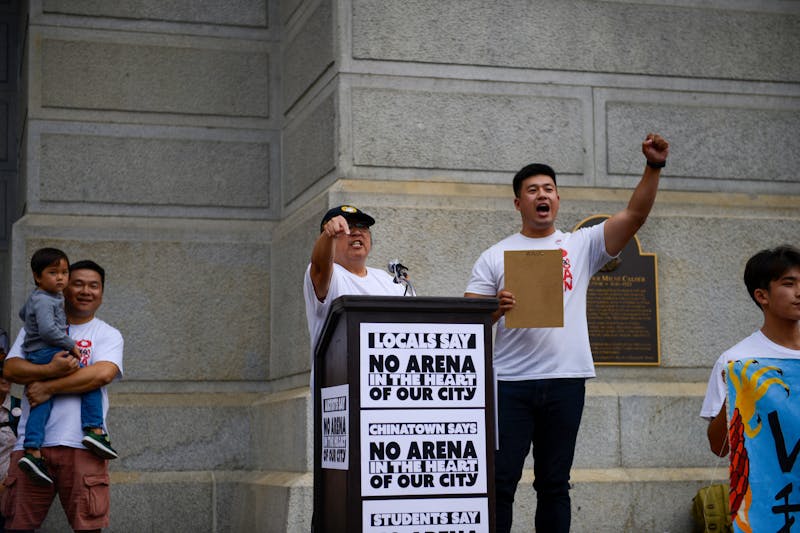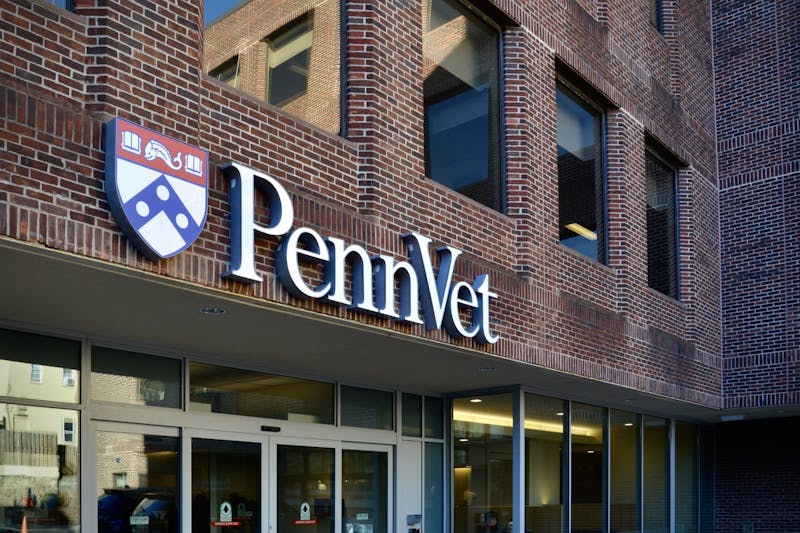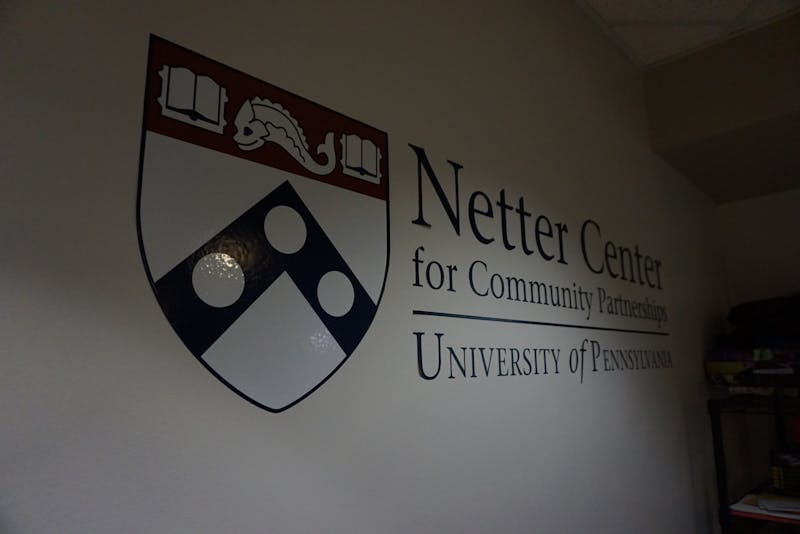
Penn's campus extends into the historic Spruce Hill neighborhood in West Philadelphia.
Credit: Avi SinghThe Philadelphia Historical Commission unanimously approved the creation of the Southeast Spruce Hill Historic District on July 12.
The process of granting the area historical protection has been underway since 1987, and the Spruce Hill Community Association — a volunteer organization that consists of neighbors — submitted two other applications in past years, with little response and no action from the PHC. The new district will stretch between Spruce Street and Woodland Avenue and between 39th and 43rd streets — in close proximity to Penn's campus.
The entire Spruce Hill district comprises nearly 2,000 properties, and the area was split into four parts by the SHCA to make evaluation more manageable.
Barry Grossbach, a member of the 2024 Board of Directors and the chair of zoning of the SHCA, has lived in the area since the 1970s. He raised money for the project and is part of its “loose planning group," he told The Daily Pennsylvanian.
“We have an obligation to protect what is here, so that future generations can witness them, can enjoy them, and can also function as stewards for those who come after them,” Grossbach said. “That’s what preservation is all about. We want to do this for history.”
Spruce Hill was originally built as a streetcar suburb for Center City in the late 1800s and was already part of the West Philadelphia Streetcar Suburb National Register Historic District. Although its listing on the National Register of Historic Places indicates the area’s historic value, it doesn’t protect properties from demolition. By contrast, listing on the Philadelphia Register of Historic Places requires that demolition permits be reviewed by the PHC. Neither listing impacts building interiors.
Creating and submitting a historic district nomination involves photographic and descriptive inventories for every property.
Grossbach expressed frustration about the movement being stalled in years past.
“We kept asking, ‘What’s going on? Why is this not moving?’” Grossbach said. “And they finally said, ‘It’s political.’ We were told not to move on it.”
He believes the SHCA was successful this time because of a “sense of inevitability” — a third application could not also fall through.
The southeast quadrant of the proposed district was submitted for evaluation (and subsequently approved) first, as it has the greatest number of Victorian structures, many of which are owned by investment property owners. He added that there are relatively few homeowners in this quadrant.
The changing demographics of the southeast quadrant also contributed to the SHCA’s desire to push for a historic district. Grossbach said Penn’s sophomore college housing requirement — which went into effect in 2021 — emptied the neighborhood as students moved out.
“A bunch of [students], I suspect, moved over to those atrocious buildings that went up on Chestnut Street,” Grossbach said.
As a result, the Spruce Hill houses that had always been inhabited are now available for rent. Grossbach added that the SHCA was concerned about what property owners might do with the empty buildings and so moved to preserve the culture.
East Asian Languages and Civilizations professor Frank Chance is also a member of the SHCA’s 2024 Board of Executives and has been a resident of Spruce Hill since 1993. He approved the project and the expenditure of money to initiate the project, and he testified before the PHC in favor of the creation of the district.
“Beginning even before the 1990s, a lot of the buildings that had a lot of history were being torn down, replaced with what I call ‘cardboard boxes,’” Chance told the DP.
Chance added he understands property owners aim to build the most profitable buildings but that a preserved Spruce Hill neighborhood provides the Penn community with “background and culture.” He believes that members of the Penn community who live there more permanently — like medical professionals, faculty, and administrators — benefit from a richer, more fulfilling neighborhood.
According to Grossbach, the main opposition to the project stems from investment property owners and also those living outside the district who cite the negative effect a historic district might have on affordable housing.
In refutation of that point, he explained that since many large Spruce Hill houses were converted to apartments and there are few single-family homes left, not many people are complaining about the housing market.
The residents of Spruce Hill are largely in support of the historic district, he added.
“Anybody who has lived there for a long time has that kind of investment in it. It’s a personal investment. It’s a historical investment. It’s an intellectual investment. It’s an emotional investment,” he said.
The Daily Pennsylvanian is an independent, student-run newspaper. Please consider making a donation to support the coverage that shapes the University. Your generosity ensures a future of strong journalism at Penn.
Donate




